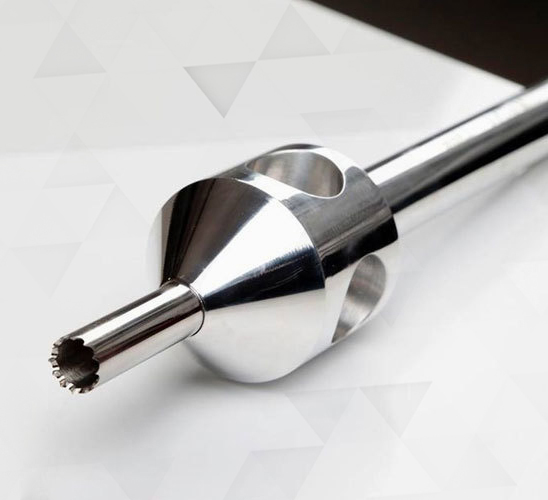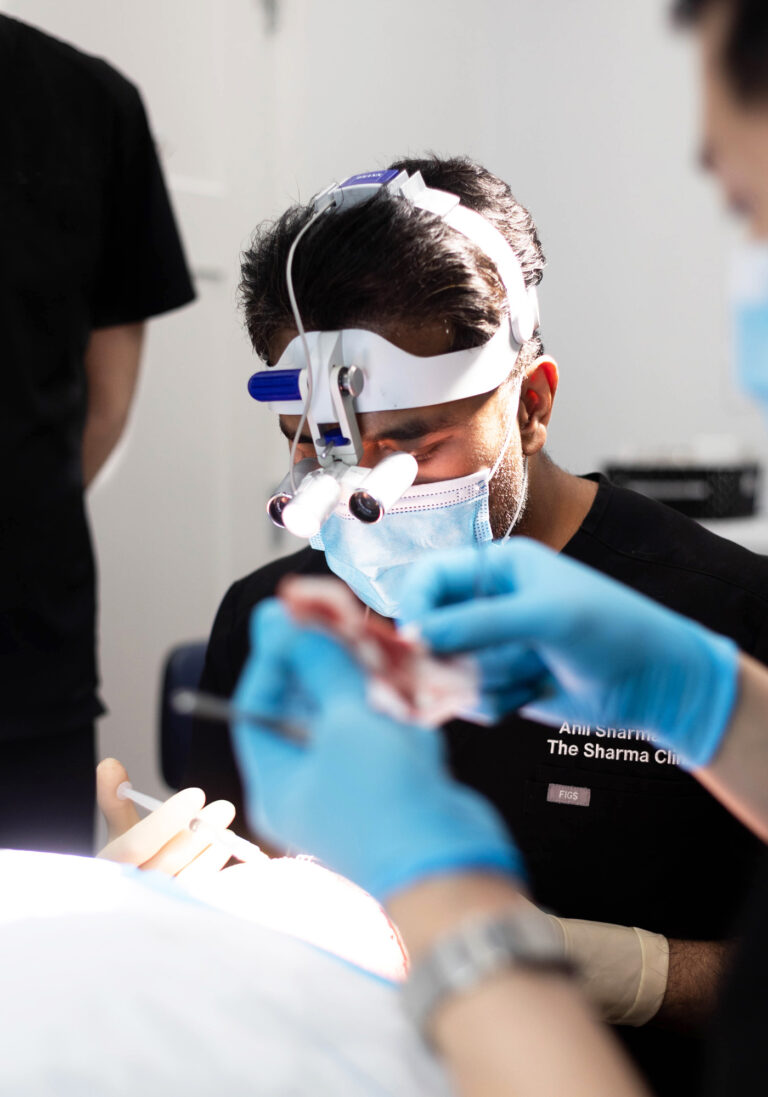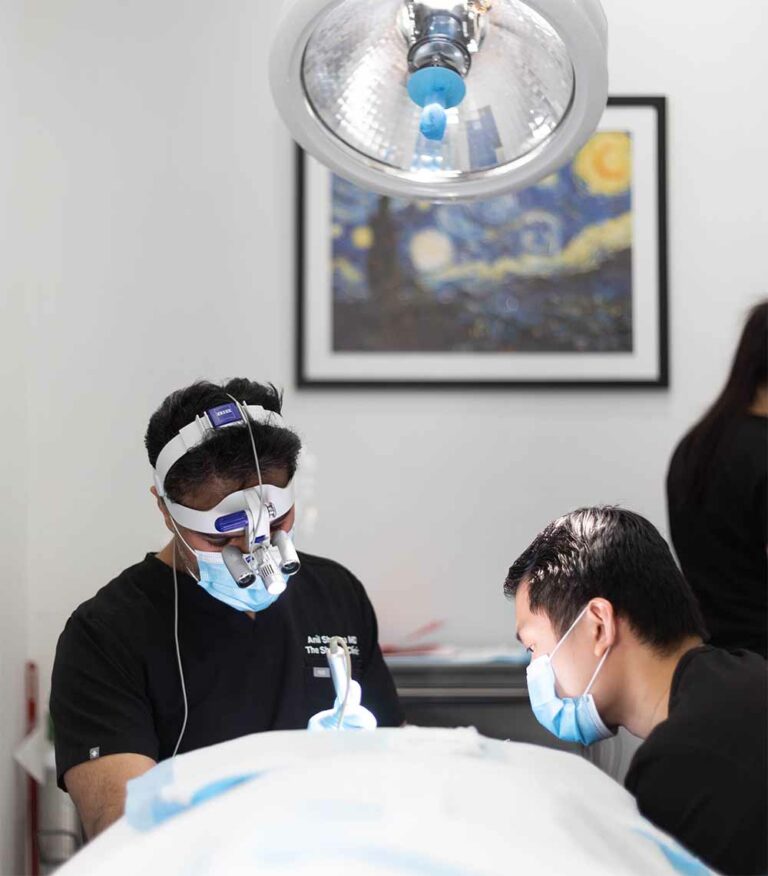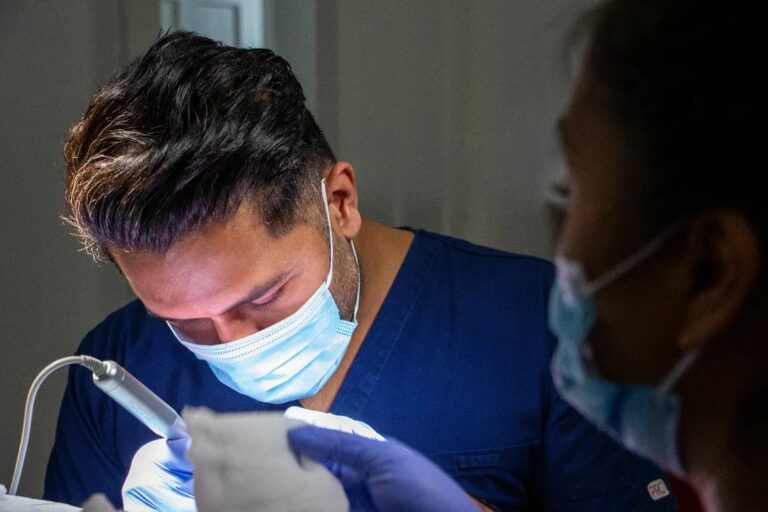Which is Better?
At Sharma Skin & Hair Surgery, we offer both F.U.E. and F.U.T. hair transplant services. Dr. Sharma is not only skilled in these surgical procedures, but he has a creative perspective in designing the perfect hairline to match facial contours and the shape of the head.
Both hair transplant techniques harvest hair follicles from the donor zone, which are then transplanted to the area that needs to be filled in. But there are differences in the way the hair is harvested and moved:
Follicular Unit Excision (F.U.E.)
The F.U.E. hair transplant process is different in that the head must be shaved so the hair follicles can be harvested individually. Since a smaller area is harvested, a minimally-invasive surgical tool can be used to avoid the appearance of scars. This tool is a small punch that keeps the hair follicle in the scalp tissue, leaving a small dot behind. The benefit is that no scalpel is needed for the procedure. The F.U.E. method is quickly becoming the most popular choice for men requiring hair transplant surgery. The low downtime, light scaring and success rate are hard to beat.
Follicular Unit Transplant (F.U.T.)
Commonly known as “strip” transplant surgery. This method of hair transplant surgery involves taking a strip of scalp from the donor area. A scalpel is used to cut this narrow piece of skin and hair follicles. Then, the wound is carefully closed with stitches using a three-layer closure to minimize scarring. If a small scar is present after the treatment, it is usually unnoticeable for most patients because it can be hidden with a small amount of hair growth. The harvested hair strip is placed under a microscope and divided into graft units that can be placed to recreate the hairline.
While both hair transplant techniques can create great results, Dr. Sharma’s skill and experience in the F.U.E. transplant method allow him to provide the perfect balance of science and artistry. The result is a natural hair restoration procedure.
Pros and Cons of F.U.T. and F.U.E. Hair Transplants
F.U.E. is considered the more advanced technique and is often the preferred method for people who want to minimize scarring and maximize the overall appearance of the hairline.
If you like to keep your hair short, then F.U.E. is a great choice because you don’t need to worry about noticeable scars. For example, a number 1 or number 2 clipper guard is sufficient to cover up the small marks left from areas that were harvested.
F.U.T. as a surgical technique is faster than F.U.E. and doesn’t require the head to be shaved, which allows you to keep the existing hair long if desired.
Sometimes, a combination of both F.U.T. & F.U.E. techniques are used to achieve best results. If maximum fullness is desired, then it is important to optimize the hair follicles that can be harvested.
A deeper dive into techniques we use

What is an F.U.E. Hair Punch?
The punch is the sharp, peaked end of the handheld tool used in the procedure. Surrounding the follicle with each insertion it scores the scalp, separating the graft from the surrounding area. The punch is then carefully lifted from the area leaving the graft ready for extraction. The graft is then placed into a HypoThermosol preserving solution until it is ready to be relocated to the desired area of the body.

F.U.T. Strip Harvesting
The F.U.T. Hair transplant involves creating a long linear incision at the back of the head. We then remove a narrow piece of skin and the attached hair follicles for harvest. Then, the wound is carefully closed with stitches using a three-layer closure technique to minimize scarring. A small scar is present after the treatment but is usually unnoticeable because it is hidden by only a small amount of hair growth.
Watch our F.U.T. Transplant video which goes through each step of the surgery narrated by Dr. Sharma.
Due to the graphic nature of the video, viewer discretion is advised.
What to expect
Dr. Sharma focuses on the needs of each patient, offering a custom experience from a team you can trust. His skills are in demand because of his close attention to detail and artistic eye, creating a natural hairline and excellent results.

Precise Hair Harvesting for Optimal Results
The key to a successful hair transplant is precision with the way the hair follicles are harvested and placed in the new area on the scalp. Human hairs are grouped together with multiple strands of hair in each follicular unit. Regardless of the number of hairs in the follicle, the entire graft is placed with all hairs remaining together.
As the follicles are harvested, Dr. Sharma is careful to position the tool with precision so that it is aligned with the hair growth direction.
Regardless of the way the hair grafts are harvested, “stereoscopic dissecting” microscopes are used to ensure each hair unit is prepared for transplant. Dr. Sharma is a highly trained surgeon, with years of experience to ensure these grafts remain viable for placement.

Skilled Placement of the Hair Grafts
Once the hair follicles are harvested and ready for placement, a slit technique is used to create small openings in the grafting area. These grafted units are placed one at a time to create a natural appearance. Not only does the placement and spacing matter, but it is a work of art to design a hairline with the right angle and flow of the hair.
Various factors affect the long-term outcome of the transplant. Dr. Sharma considers a variety of details, such as the depth of the graft placement, rotation of the hair, and positioning relative to other grafts. This strategic placement blends seamlessly with the existing hair, creating results that make it difficult to detect a difference between the grafts and the natural hair growth.
Learn more about hair transplant incisions here.
Case studies
Here are some in-depth stories about some of our successful transplants. Hear from the individuals who are now enjoying new, thick, and dense hair.
Devin’s F.U.E. Hair Transplant
This local rock star allows us to share his Hair Transplant journey here at the Sharma Clinic. Many people want to see what is involved in this complex procedure and we wanted to deliver just that. Devin had roughly 1,700 grafts transplanted with the FUE transplant in Edmonton Alberta. After only 6 months, his hair line and mid-scalp are looking just amazing. Be sure to subscribe to us to see his full FUE hair transplant results after 1 year.
Hair Transplant Techniques FAQ
We’ve compiled a list of some of the most common questions asked during our initial consultation
Hair follicles are harvested from ideal donor locations: on the sides and back of the head. The hair in these areas differ from the hair on top of the head because it is resistant to a hormone known as DHT, which causes male pattern baldness. These naturally resistant hair follicles are perfect for transplantation because they continue to grow permanently in the new location.
Dihydrotestosterone (DHT) is a hormone that affects hair follicles on the scalp. Hormonal changes can cause the follicles to become shorter in length and smaller in diameter, until eventually the follicle disappears completely. Male hair loss is hereditary, but certain medical conditions or medications can also cause hair loss.
Your scalp will be swollen, tight, and achy for the first few days after treatment. It is common to experience temporary scabbing during the healing process.
Many patients are surprised to learn that the transplanted hair usually falls out within a few weeks after the surgery. Be patient; the truth is that you don’t walk out of the clinic with a full head of hair. Hair goes through phases, and the transplanted hair will be visible after a few months since it needs to go through all three cycles: anagen, catagen, and telogen.
Hair transplants using the FUE (Follicular Unit Excision) technique will result in minimal scarring that may be difficult to detect with the naked eye. The scarring will be scattered over a large surface area in the donor region, where individual follicular units are extracted. If a number two or number three clipper is used, it usually helps to further camouflage the area. While there will be small red pinpricks where the follicles are removed initially, these marks typically heal and become virtually undetectable within a few days, leaving no visible linear scarring. In any surgical procedure, scarring is always a possibility and can vary greatly depending on an individual’s genetics, skin type, and other factors in their medical history. Furthermore, the extent of scarring is also dependent upon the amount of grafts taken from the back of the scalp, the concentration, tissue laxity, and the specific surgical technique used. All of these factors may be discussed with your individual surgeon during your consultation to better understand the potential for scarring in your particular case.
The transplanted hair follicles tend to be permanent, but that doesn’t mean that you won’t lose more hair in the future. Hereditary hair loss is a continual process, which is why the transplant plan is designed based on your unique pattern of baldness. Continued hair loss can be minimized by using certain products and medications, and sometimes another transplant treatment is required in the future.
Book now
Talk to a Hair Transplant Expert in Edmonton, Alberta
Contact us for a free virtual hair loss consultation and get started on your transformation today.



